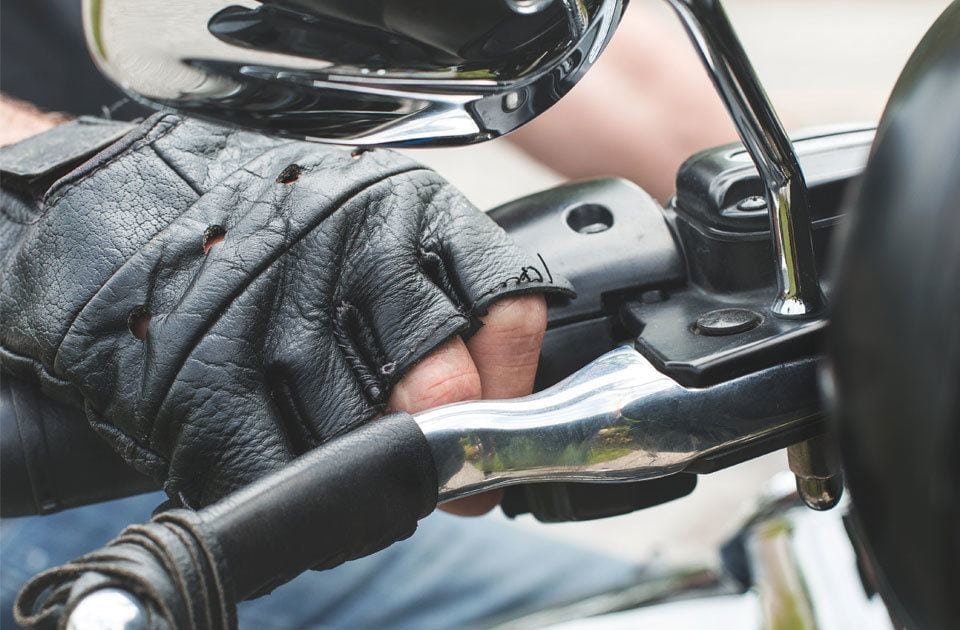Every rider must know the different motorcycle hand signals, how and when to use them. When it’s impossible to verbally communicate with other riders, the easiest way to send your message across is through hand signals. Not only is it used for communication but it can also keep you safe from road hazards.
Furthermore, motorcycle hand signals for group riding make the trip more enjoyable because riders can find ways to connect with the group. In group riding, the leading rider is given the task to control the pace and interact with the entire group through hand signals. It is therefore important to understand what these hand signals mean so you don’t get left behind. Besides, you never know when the group assigns you to be the leading rider. And when that time comes, at least you know you’re ready. That is only possible if you’re well-versed with hand signals.
Proper communication in traffic improves your safety
It’s no secret that majority of vehicular accidents involved a two-wheeled motorcycle. And I think every motorcycle rider is aware that they are more exposed to dangerous accidents with their bikes compared to other vehicles.
When you’re on the road with your motorcycle, even the tiniest mistake can result to serious injuries and worse, death. Riding with a group significantly reduces the risk of accidents for motorcycle riders. However, group riding can still pose danger especially if there is no communication between the riders.
It is crucial to let other motorists take notice of your presence. You need to let them know that you’re pulling up in front of them or you’re slowing down. Remember, one of the biggest causes of accidents is by taking the rider’s right of way without prior notice.
It’s already given that motorcycles are equipped with a headlight, taillight, brake light, passing light, turn signals, and other indicators that can be used to communicate with other motorists. However, these indicators may not adequately convey the message that you want to give.
Which light can you use to tell other motorists that there’s a hazard in the roadway? Or which of these indicators are you going to use when you want to pull over for a comfort stop?
There are other important messages that you may want to get across that you can’t express through your motorcycle’s indicators.
This is when hand signals really come in handy.
You are able to increase your visibility to other motorists through hand signals. And you also let them understand your intentions more clearly. If you haven’t got a single clue about motorcycle hand gestures, don’t fret. This is why we’re here to help you.
Essential Hand Signals in Motorcycling
Hand gestures may not be totally new to you. You’ve probably learned about hand signals for motorcycle driving test as part of your license exams. But more often than not, riders seem to forget these basic hand signals as they solely rely on their motorcycle’s indicators. And as stated earlier, the bike’s indicators may not be enough to properly communicate within a large group of riders. Not to mention, most riders prefer to interact with each other through hand gestures.
Now if you’re ready to learn the ropes, here are the essential motorcycle hand signals that you should know.
Left turn
Gesture: Arm and hand extending left, palm facing down.
Message: To let the group know that you’re turning left.
Application: If you’re leading, use this signal lead the group. If you’re following, use this signal to break from the group.
Right turn
Gesture: Arm out, bent at 90̊ angle, fist clinched.
Message: To let the group know that you are turning right.
Application: If you’re leading, use this signal lead the group. If you’re following, use this signal to break from the group.
Stop
Gesture: Arm extended straight down, palm facing back.
Message: To let the group know that you are going to a stop.
Application: When the leader uses this signal, the riders following should relay the same signal all the way back to the last rider.
Speed Up
Gesture: Arm extended straight out, palm facing up, swing upward.
Message: To let the group know that you are increasing speed.
Application: Use this signal to cue the rest of the group to speed up and match your pace. This is very important for inexperienced riders to learn so they won’t get left behind when the group increases the pace.
Slow Down
Gesture: Arm extended straight out, palm facing down, swing down to your side.
Message: To let the group know that you are reducing speed.
Application: Use this signal to indicate the need to decelerate.
Follow Me
Gesture: Arm extended straight up from shoulder, palm forward.
Message: To inform the group that you’re appointing yourself as the leader.
Application: This signal can be used to divide a large group by forming another group. Use this signal to let other riders follow you into forming another group.
You Lead/Come
Gesture: Arm extended upward 45̊, palm forward pointing with index finger, swing in arc from back to front.
Message: “You! Follow me!”
Application: Before using this signal, pull up alongside the rider you want to lead or follow. Using your index finger, point to the rider’s bike and swing your arm forward.
Road Hazard
Gesture: On the left, point with left hand; on the right, point with right foot.
Message: To point out potential hazard in the roadway.
Application: Depending on the position of the hazard, point with your left hand if the hazard is on the left side and point with your right foot if the hazard is on the right side.
Single File
Gesture: Arm and index finger extended straight up.
Message: To instruct the group to change lane position and follow a single file formation.
Application: The leader should be able to determine when to form a single file. This formation can be considered when approaching a curve in the road or when the road is in poor condition.
Double File
Gesture: Arm with index and middle finger extended straight up.
Message: To dictate a change in lane position by following a double file formation.
Application: Double file formation reduces the risk of collisions particularly in narrow roads or when approaching an intersection.
Comfort Stop
Gesture: Forearm extended, fist clenched with short up and down motion.
Message: Take a short break in a journey to allow riders to go to the toilet.
Application: Choose an ample area to pull over and make sure the road or shoulder is free from any debris.
Refreshment Stop
Gesture: Fingers closed, thumb to mouth.
Message: Stop at a gas station or restaurant ahead.
Application: Use this gesture to indicate the need to take a break at the nearest gas station or restaurant.
Turn Signal On
Gesture: Open and close hand with fingers and thumb extended.
Message: To let a rider know that his turn signal is blinking for no reason.
Application: Some riders tend to forget to turn back the turn signal after using it. And this constant blinking can be annoying to other motorists. You can use this signal to help ‘forgetful’ riders to set their blinkers right.
Pull Off
Gesture: Arm positioned as for right turn, forearm swung toward shoulder.
Message: To tell the group to pull off of the road immediately or at the next exit.
Application: This signal is used when there is a need to stop other than refreshment or a comfort stop.
Cops Ahead
Gesture: Tap on top of helmet with open palm down.
Message: To inform the group about the presence of cops or police activity up the road.
Application: This is to notify the riders beforehand of a possible police activity to avoid getting in the way of the cops.
Fuel
Gesture: Arm out to side pointing to tank with index finger extended.
Message: To inform other riders that you’re running out of gas and you need to refuel.
Application: Always pay attention to your fuel gauge. Don’t hesitate to use this signal when you’re running low on gas, especially if the nearest gas station is still miles away.
The importance of motorcycle hand signals for group riding
Learning the essential motorcycle hand gestures isn’t as difficult as it seems. It may be a bit confusing for beginner riders but they’ll eventually get used to it through experience. But no matter how experienced a group is, it is still important to conduct a pre-ride meeting in order to orient new riders and to assign the leader and the tail rider.
Every member of the group should be fully aware of the hand signals, the pace of the ride, the different types of formations, and the exact location for rest stops. New riders tend to panic when they lagged behind due to some reasons such as red light or a car not letting them pass.
Knowing the exact locations of the rest stops will give them an idea where to catch up. As for the leading rider, he is given the responsibility to bring the group to the destination in the safest way possible. The leader will be performing most of the motorcycle hand signals so everyone needs to keep an eye on the front of the pack.
The gesture from the leader shall create a chain reaction all the way back to the tail rider. In a large group, the riders will have to relay the hand signal for the riders at the back to follow. The pace of the ride will be determined by the leader and he decides when to ride in a double file or a single file.
In case a member needs to refuel or has to stop for some reason, using motorcycle hand gestures can greatly help get the message to the leader.
Let me make it clear that motorcycle hand signals are not mandatory for bikers. However, proper communication is highly advised to ensure a safer ride.

David Williams is an author with a passion for motorcycles and all things related to the world of two-wheeled vehicles. His expertise is evident on his website, The Moto Expert, where he shares his knowledge and insights with fellow enthusiasts. Follow him on social media to stay up-to-date on the latest motorcycle news, reviews, and trends. Whether you’re a seasoned rider or just starting out, David’s content is sure to inform and entertain. Join his community and become a part of the conversation today.




